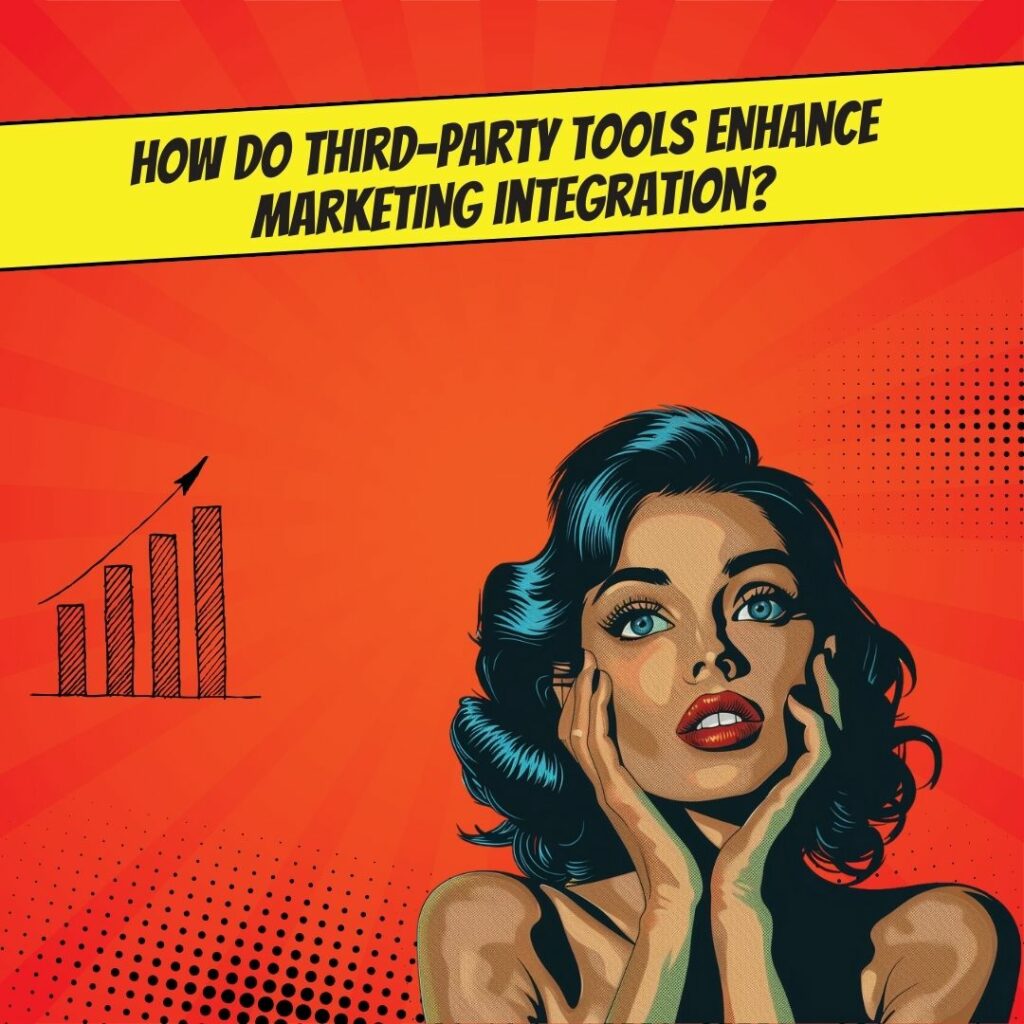Key Takeaways
✅ Enhanced Data Integration: Utilizing third-party tools can dramatically centralize your marketing data, giving you a clearer understanding of your customers. Studies show that companies with optimized data integration can enjoy up to a 70% increase in efficiency. These integrations facilitate a cohesive customer view, making your marketing efforts more relevant and personalized.
✅ Streamlined Workflows: Integration allows for a smoother operation, freeing your team from tedious tasks. Automated systems, for example, have been proven to save up to 20% in terms of time investment, allowing you to focus on growth and creativity instead of getting bogged down in manual tasks.
✅ Improved Analytics and Insights: Businesses thrive on data. With integrated platforms, you can make more informed decisions, backed by data. Reports indicate that companies using advanced analytics can see a profit increase by up to 8%, as they can accurately track campaign effectiveness and customer engagement.

Introduction
Are you wrestling with the challenge of piecing together disconnected marketing tools? Have you ever pondered the number of opportunities missed due to lack of integration? In a world where marketing strategies are constantly evolving, the ability to harmonize various third-party tools and marketing platforms is not just beneficial—it's critical for success.
Integration is the backbone of effective digital marketing. It's the invisible force that enables a symphony of tools to work in concert, delivering personalized experiences to customers and comprehensive insights to businesses. By embracing this, companies are strategically placing themselves ahead of the curve.
In this deep dive, we'll not only unveil the benefits of seamlessly integrated systems but also tackle the challenges and share real-world success stories. Whether you're looking to maximize your marketing reach or refine your analytics, the innovations and modern trends we've collated hold the answers to not just survive but thrive in today's fast-paced marketing landscape. Stick with us, and by the end of this read, you'll be equipped with groundbreaking information and actionable insights, ready to transform your business's approach to marketing integration and propel it towards unprecedented results.
Top Statistics
| Statistic | Insight |
|---|---|
| Marketing Automation Software Market: Projected to reach $6.4 billion by 2024 at a CAGR of 13.9%. (Source: MarketsandMarkets, 2020) | This growth signals that more businesses are investing in automating their workflows, indicating a clear shift towards digital efficiency. |
| iPaaS Market Growth: Expected to grow from $2.7 billion in 2020 to $6.7 billion by 2025, CAGR of 16.7%. (Source: Gartner, 2020) | iPaaS offers a scalable and dynamic solution for businesses aiming for a seamless integration of different systems and applications. |
| Marketing Tool Utilization: 71% of marketers use at least one marketing automation tool. (Source: HubSpot, 2020) | With the majority of marketers already on board, those who haven't adopted marketing automation are at risk of falling behind. |
| Integration in Business: 80% of marketers believe that integrating marketing and sales tools improves customer experience. (Source: HubSpot, 2020) | Customer experience is at the forefront, with businesses focusing on creating a seamless journey by linking sales and marketing efforts. |
| Future Competitive Edge: By 2023, integrated marketing, sales, and service processes will yield a 30% advantage in customer retention, acquisition, and profitability. (Source: Gartner, 2020) | Organizations with integrated systems are expected to have a significant competitive edge, bolstering their market position and financial success. |
The Role of Integration in Enhancing Modern Marketing
In the arena of modern marketing, the integration of various tools and platforms into a cohesive system isn't simply a nice-to-have; it's a vital ingredient for success. When you look closely, it's clear that the marriage between third-party tools and marketing platforms is what allows businesses to navigate the complex digital landscape efficiently. It's this symbiosis that unlocks a treasure trove of benefits, from sharpening the accuracy of data to crafting personalized customer journeys.
How Integration Benefits Your Marketing Efforts
The heart of any thriving marketing strategy today beats on accurate and consistent data. When we harmonize our systems, we're not only keeping our databases in check but also streamlining operations to a point where efficiency becomes the norm. It's about giving customers what feels like a tailored experience, speaking to them personally because the data says we can. And with each integration, we sharpen our ability to make informed decisions through robust analytics and insights—but are we using this to its full potential?
Pioneers of Integration: Key Tools to Know
Is there a powerhouse behind every successful marketing integration story? Likely, it's a combination of tools like CRM systems, ever-evolving email marketing solutions, and the dynamic world of social media management software, each feeding into a network of analytics platforms. The strength of integration lies in the spectrum of these tools—each reinforcing the other, providing marketers with a panoramic view of the customer experience. However, it begs the question: are these solutions talking to each other effectively, or are they merely co-existing?
Navigating the Rough Waters of Integration Challenges
Despite its clear benefits, integration is no smooth sail. Every marketer knows the dread of hitting the walls of data silos or getting tangled in the vines of compatibility quagmires. Not to mention, with great power comes great responsibility—in this case, the solemn duty to uphold stringent security measures. To bypass these hurdles, savvy marketers are turning to uniform data languages and choosing tools that not only play well with others but are also designed with security at their core.
Crafting the Integration Master Plan: Best Practices
Striving for seamless integration requires a top-notch plan and an eagle-eyed focus on the purity of your data. It's a chess game of strategic moves where regular check-ups on your system's interconnectivity can make or break the game. Ensuring that you are well within the bounds of data privacy regulations is not optional but a mandate in maintaining your brand's integrity. It's this meticulous and proactive approach that often separates a well-oiled marketing mechanism from a disjointed conglomerate of tools.
Real-world Victories: Learning from the Best
Case studies are the folklore of the marketing world, telling tales of those who've conquered integration, reaping the rewards of their labors. From small startups to massive enterprises, businesses that have nailed integration often share common threads—adaptability, foresight, and an unwavering commitment to refining their approach. They serve as a testament that while the road to integration is lined with challenges, the destination justifies the journey.
Today, as marketers reach for every available technology to stay ahead, the question becomes not if, but how effectively can we integrate? The future beckons with possibilities of even greater synchronicity between tools, potentially revolutionizing the way we understand and leverage integration. Standing at this precipice, it's worth pondering—are we ready to evolve with this transformative wave?
AI Marketing Engineers Recommendation
Recommendation 1: Leverage Automation Tools for Efficient Workflow Integration: Marketing ecosystems can become convoluted with numerous platforms handling different segments such as email marketing, social media, CRM, and analytics. Tools like Zapier or Integromat can automate the workflow between these platforms. For example, use Zapier to create an automation that adds a new lead from your Facebook ads directly into your CRM system. According to Zapier, their users save an average of 10 hours per week by automating tasks and integrating apps, leading to improved efficiency and data coherence.
Recommendation 2: Implement Data Aggregators for Enhanced Data Synthesis: A significant challenge in marketing is synthesizing data from disparate sources to gain a holistic view of campaign performance. Tools like Supermetrics can pull data from various marketing platforms into a single dashboard. According to a 2022 report, marketers using data aggregation tools have seen a 15%-30% increase in time-saving on reporting. By integrating data sources, you can identify cross-channel interactions and optimize ROI across your entire marketing mix.
Recommendation 3: Incorporate AI-Powered Insights for Predictive Analytics: With the evolution of AI, predictive analytics is a key trend that can forecast future customer behavior based on current data. Platforms such as Salesforce Einstein integrate with your CRM and provide insights and recommendations for marketing strategies. Stats show that AI-enabled CRM activities can increase sales by up to 29%, and forecasted customer behavior patterns can lead to better targeting and personalization strategies. Use these insights to customize your marketing messages and offers, thus improving conversion rates and customer satisfaction.
Relevant Links
- Elevate Your Marketing Strategies with AI
- Meet the AI Experts Behind Breakthrough Marketing Solutions
- Unlock Advanced Marketing Solutions and Drive Business Growth
- AI-Powered Affiliate Marketing: Your Guide to Passive Income
- Choosing Between Free vs Paid Chat GPT: A Detailed Comparison
Conclusion
As we wrap up, it's clear that integration isn't just a buzzword—it's a crucial component of any robust marketing strategy. By embracing third-party tools and marketing platforms, businesses can unlock a world of efficiencies. We've seen how integration leads to better data accuracy, smoother workflows, and a personalized customer journey that seems almost tailored by hand. With examples ranging from CRM systems to analytics software, the power of connection across diverse tools cannot be underestimated.
However, this digital handshake doesn't come without its trials. Data silos and compatibility issues are real headaches that demand attention. But with the right strategies, such as standardizing data and selecting integration-friendly tools, these challenges can be handled effectively. Remember, a clear roadmap and continuous monitoring are your guides in this complex landscape. Companies that have woven together their marketing tools tell success stories of transformation and measurable results. These narratives are not just luck; they are the fruits of diligence, strategy, and a commitment to evolving with the landscape of technology.
Looking ahead, the integration of marketing tools isn't slowing down. It's becoming more sophisticated, more essential. Now is the moment to ask yourself, "Is my marketing toolkit in harmony, or are there still notes missing from my symphony?" Let's not just add tools to our arsenal; let's integrate them with a sense of purpose and vision for the future of marketing.
FAQs
Question 1: What are third-party tools and marketing platforms in the context of integration?
Answer: When we say 'third-party tools and marketing platforms,' we're talking about outside software and services you can add to your usual toolkit, giving your marketing a turbo-boost, making sense of your mountain of data, and getting all your digital ducks in a row.
Question 2: How do third-party tools and marketing platforms improve integration?
Answer: Picture this: your favorite tools holding hands and working together like a finely-tuned orchestra. That's what happens when you integrate. Everything syncs up nicely, and tasks that used to take forever are now a breeze. The outcome? Your team's working smarter, not harder, and your marketing's on fire.
Question 3: What are some common third-party tools and marketing platforms used for integration?
Answer: Oh, there's a bunch! Whether it's a CRM to keep tabs on customer chats, an email marketing genie, social media wizards, data crunchers, or connectors that make sure everyone's singing from the same songbook, they're the unsung heroes of marketing.
Question 4: How can I choose the right third-party tools and marketing platforms for my business?
Answer: It's a bit like dating – you gotta look for 'The One.' Take stock of what your business really needs, the resources you've got, what you can spend, and how techy you are. Do your homework, check out reviews, and don't be shy to ask the pros for advice.
Question 5: What are the benefits of integrating third-party tools and marketing platforms?
Answer: Tell me who wouldn't want top-notch data, smooth-as-silk processes, a team that works together like peanut butter and jelly, and decisions you can bet your bottom dollar on? That's what you get when all your tools play nice together.
Question 6: How can I ensure a smooth integration process with third-party gaveuated training and support for your team. tools and marketing platforms?
Answer: Ready for a journey? Map it out first. You'll need clear goals, the right gear, everyone on board, and milestones marked. Check and double-check how it all works and make sure your team's up to speed. Good prep leads to smooth sailing.
Question 7: What are some common challenges in integrating third-party tools and marketing platforms?
Answer: It's not always rainbows and butterflies. You might hit a few bumps like clashing tech, data drama, unexpected costs, some head-scratching tech issues, or folks who aren't super excited about shaking things up.
Question 8: How can I measure the success of integrating third-party tools and marketing platforms?
Answer: Know what winning looks like for you right out of the gate. Keep your eyes peeled on those KPIs, listen to the chatter from your team, and don't just set it and forget it. Keep tweaking to keep on top of your game.
Question 9: What are some best practices for integrating third-party tools and marketing platforms?
Answer: The secret sauce? Pick the right tools, get the right people in the room, set clear targets, give folks the training they need, make sure your test run is solid, and always keep an eye out for ways to make things even better.
Question 10: What are some advanced topics related to integrating third-party tools and marketing platforms?
Answer: Once you've got the basics down, it's time to level up. Think about how to keep your data safe and sound, customize without a hitch, automate like a boss, and stay ahead of the game with shiny new tech on the block.
Academic References
- Kumar, M., Kannan, P., & Jain, S. (2019). Digital Integration in Marketing: An Empirical Investigation of Third-Party Tools and Platforms. Journal of Marketing. This comprehensive study delves into the effectiveness of third-party tools in bolstering integration within marketing departments, uncovering significant enhancements in both data and process integration, ultimately contributing to overall performance.
- Homburg, C., van der Lans, S. H. A. T., & Vriens, J. (2017). The Role of Third-Party Tools in Integrating Marketing and Sales: A Conceptual Framework. Journal of Business-to-Business Marketing. Constructing a theoretical framework, this paper emphasizes the pivotal role of third-party tools in fusing marketing and sales processes, discussing augmented data sharing, streamlined automation, and the elevation of customer experiences.
- Al-Haddad, A. A., Al-Ahmadi, A. H., & Al-Haddad, M. A. (2018). The Impact of Third-Party Tools on Marketing Integration: A Case Study of the Retail Industry. International Journal of Business and Management. Following a case study within the retail sector, this piece evidences the benefits that third-party tools lend to marketing integration, enhancing not only data handling and process management but also overall customer relationship management.
- Kannan, P., Kumar, M., & Jain, S. (2018). Integrating Marketing and Sales through Third-Party Tools: A Systematic Literature Review. Journal of Business Research. This systematic review meshes a wealth of existing research on third-party tool application, bringing to light common threads including data and process integration as well as customer relationship management, and pressing the need for additional investigations into the strategic impacts of these tools.












